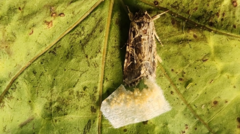In a remarkable discovery, scientists from Tel Aviv University have unveiled that animals can respond to sounds emitted by plants, suggesting the existence of an intricate communication network within ecosystems. In their pioneering study, researchers found that female moths deliberately avoided laying their eggs on tomato plants that produced sounds indicative of distress, likely signaling ill health.
This breakthrough follows earlier findings by the same team, which established that plants emit "screams" when stressed, sounds that fall outside the range of human hearing but are detectable by various insect and mammal species like bats. "This is the first demonstration ever of an animal responding to sounds produced by a plant," said Prof. Yossi Yovel, a leading researcher at Tel Aviv University, highlighting the potential for a variety of animals to make ecological choices influenced by plant sounds, such as selecting pollination sites or assessing the safety of hiding spots.
The meticulous experiments conducted by the team ensured that the moths' choices were indeed based on the sound cues rather than visual characteristics of the plants. Future studies will explore the various sounds made by different plant species and whether other animals respond similarly, reinforcing the complexity of these interspecies interactions.
Additionally, researchers are investigating whether plants can convey distress signals to one another through these sound emissions, potentially leading to mutual adaptive behaviors like conserving water during droughts. Prof. Lilach Hadany pointed out the significance of these findings, emphasizing that plants, while not sentient, can produce sounds as a reaction to changes in their conditions, which can then influence surrounding organisms.
Moreover, this discovery opens up the possibility of coevolution, where both plants and animals could develop enhanced communication abilities to derive mutual advantages, such as improved survival rates. "Plants could evolve to make more sounds or louder ones if they were beneficial, while the hearing sensitivities of animals might also adapt to capture more information from the environment," Prof. Hadany explained.
This study not only sheds light on the interaction between species but also underscores a vast realm of unexplored ecological dynamics—an entire world waiting to be understood in the communication between plants and animals. The findings have been published in the journal eLife, marking a significant contribution to the field of ecology.
This breakthrough follows earlier findings by the same team, which established that plants emit "screams" when stressed, sounds that fall outside the range of human hearing but are detectable by various insect and mammal species like bats. "This is the first demonstration ever of an animal responding to sounds produced by a plant," said Prof. Yossi Yovel, a leading researcher at Tel Aviv University, highlighting the potential for a variety of animals to make ecological choices influenced by plant sounds, such as selecting pollination sites or assessing the safety of hiding spots.
The meticulous experiments conducted by the team ensured that the moths' choices were indeed based on the sound cues rather than visual characteristics of the plants. Future studies will explore the various sounds made by different plant species and whether other animals respond similarly, reinforcing the complexity of these interspecies interactions.
Additionally, researchers are investigating whether plants can convey distress signals to one another through these sound emissions, potentially leading to mutual adaptive behaviors like conserving water during droughts. Prof. Lilach Hadany pointed out the significance of these findings, emphasizing that plants, while not sentient, can produce sounds as a reaction to changes in their conditions, which can then influence surrounding organisms.
Moreover, this discovery opens up the possibility of coevolution, where both plants and animals could develop enhanced communication abilities to derive mutual advantages, such as improved survival rates. "Plants could evolve to make more sounds or louder ones if they were beneficial, while the hearing sensitivities of animals might also adapt to capture more information from the environment," Prof. Hadany explained.
This study not only sheds light on the interaction between species but also underscores a vast realm of unexplored ecological dynamics—an entire world waiting to be understood in the communication between plants and animals. The findings have been published in the journal eLife, marking a significant contribution to the field of ecology.






















